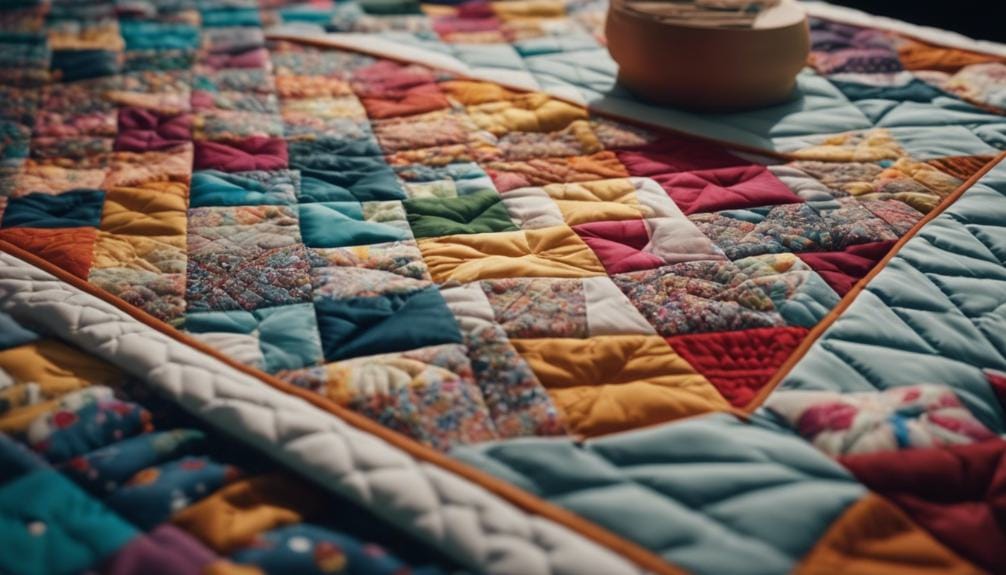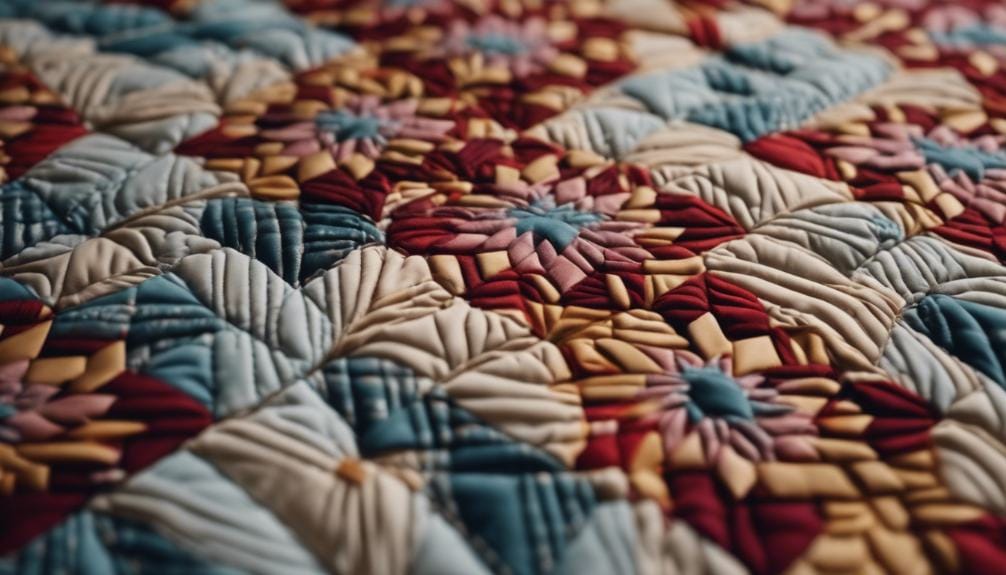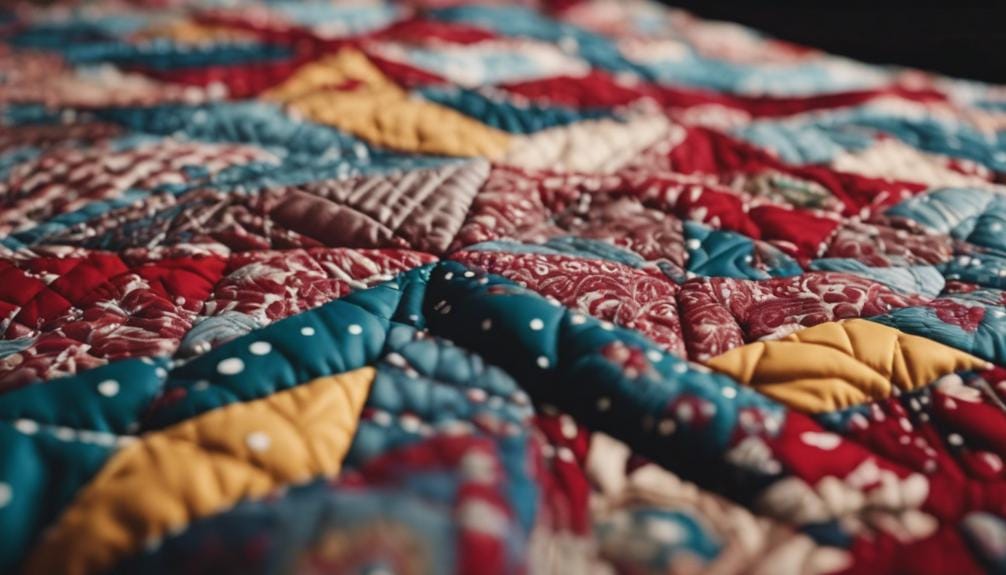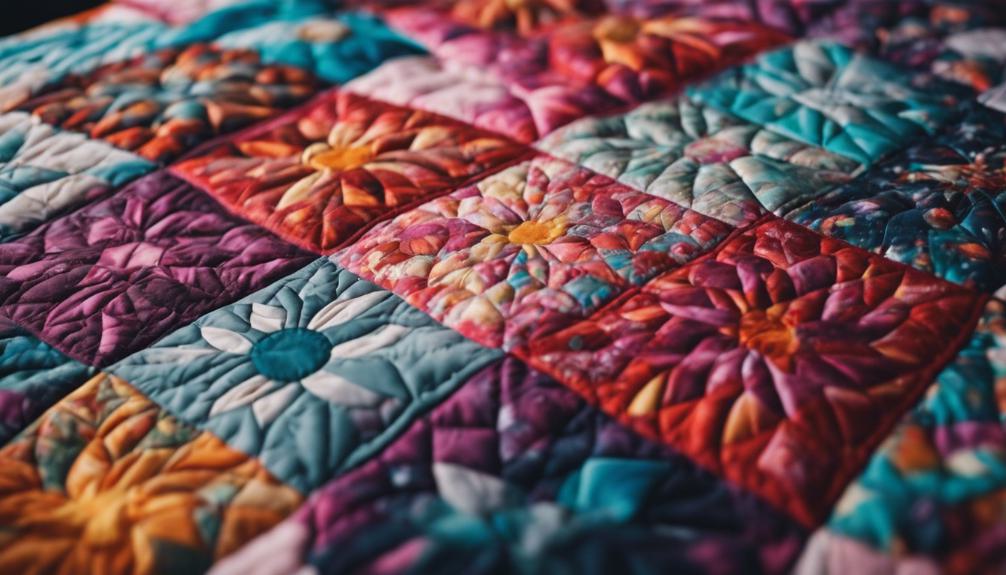Why Are Quilts so Expensive – Deciphering the Cost
When you unravel the intricate threads that weave together the mystery of quilt pricing, you’ll find a tapestry of elements that justify their seemingly high cost. From the luxurious fabrics that cloak them to the meticulous hands that bring them to life, quilts are not merely stitched creations but rather pieces of art with a price tag that reflects their essence.
But what truly makes quilts so expensive? The answer lies in the interplay of craftsmanship, materials, design, and a certain intangible allure that makes them cherished heirlooms.
Key Takeaways
- Quilts are expensive due to the time-intensive craftsmanship and artistry involved.
- Quality materials impact costs, reflecting the craftsmanship and enhancing durability.
- Customization requests and intricate designs add to the pricing of quilts.
- Handmade quilts hold unique value with personalized touches and meticulous skill.
Factors Influencing Quilt Pricing

When determining the price of a quilt, various factors come into play that greatly influence the final cost. Handmade quilts, in particular, are priced based on several key elements, with quilt size being a significant factor. Larger quilts require more materials and time to construct, resulting in higher prices compared to smaller counterparts. The size of a quilt not only affects the amount of fabric needed but also impacts the complexity of the design and the overall labor involved in its creation.
In addition, pricing factors for handmade quilts also take into account the intricacy of the design and the level of customization requested by customers. Quilts with elaborate patterns or personalized touches often entail additional hours of work, leading to a higher cost. Customers looking for unique quilt designs or specific themes can expect to pay more to reflect the individualized nature of their requests.
Additionally, the choice of quilting technique, whether hand quilting or machine quilting, influences the pricing of handmade quilts. Hand quilting, known for its meticulous craftsmanship and time-consuming process, generally commands a higher price point due to the artisanal skill and effort required. On the other hand, machine quilting, while faster and more efficient, may offer a more budget-friendly option for customers seeking a quilt at a lower cost.
The Craftsmanship Behind Quilts

The craftsmanship behind quilts is a proof of the meticulous skill and attention to detail required in their creation, contributing greatly to their overall value and cost. When you invest in a handmade quilt, you aren’t just purchasing a blanket; you’re acquiring a piece of art crafted with dedication and expertise.
Each stitch in a quilt, whether meticulously placed by hand or machine, is a demonstration of the laborious process involved in its making. The precise stitching adds durability and beauty to the quilt, making it a cherished item for generations.
Craftsmanship in quilts is about more than just sewing fabric together. It involves intricate designs and patterns that require expertise to execute flawlessly. The complexity of these designs reflects the skill of the quilter and contributes to the uniqueness of each piece.
The time-intensive process of quilting, whether done by hand or machine, is a labor of love. Every quilt tells a story of hours spent cutting, piecing, and stitching fabric together to create a cohesive and visually appealing final product.
When you consider the craftsmanship behind a quilt, you begin to understand why these pieces are priced the way they are. The dedication, skill, and artistry that go into making a quilt elevate it from a simple blanket to a work of art worthy of admiration.
Quality Materials Impacting Costs

Crafting high-quality quilts involves the strategic selection and utilization of premium materials that greatly influence the final cost. The choice of materials such as organic cotton, silk, or imported fabric not only elevates the quilt’s overall quality but also contributes to a higher price point. These quality materials are essential for enhancing the durability, aesthetics, and feel of the quilt, making it a luxurious and long-lasting investment for customers.
When artisans make quilts using superior materials, they enhance the visual appeal and texture of the quilt, creating a product that stands out in regards to both appearance and performance. The utilization of high-quality fabrics guarantees that the quilt retains its pristine condition for years to come, increasing its overall value.
Additionally, the cost of quality materials plays a significant role in determining the pricing of quilts. This cost reflects the craftsmanship and dedication poured into every aspect of the quilt-making process, from material selection to the final stitches. Ultimately, by investing in premium materials, artisans not only create exquisite quilts but also guarantee customers a lasting piece of art that’s worth the higher price.
Artistry and Design in Quilting

Using premium materials in quilting not only impacts the cost but also sets the foundation for the intricate artistry and detailed designs that make each quilt a unique and valuable piece of art. Quilts aren’t just blankets; they’re intricate works of art that require skill and craftsmanship to create.
Here is how artistry and design play a critical role in the quilting process:
- Intricate Patterns: Quilters often spend hours meticulously planning and executing intricate patterns. Each stitch is carefully thought out, contributing to the overall design of the quilt.
- Customized Artistry: Customized quilts tailored to individual preferences showcase a higher level of artistry. Quilters incorporate personalized elements into the design, making each quilt a one-of-a-kind masterpiece.
- Storytelling Through Design: Each quilt tells a story through its design. From traditional patterns to modern interpretations, every quilt reflects the artistic value and creativity of the quilter. The design choices convey emotions, experiences, and themes, adding layers of depth to the final piece.
Crafting a quilt involves more than just sewing fabric together; it’s a creative process that requires attention to detail, skillful execution, and a deep appreciation for artistry and design. This level of craftsmanship is what makes quilts valuable pieces of art worth the investment.
Time and Value of Handmade Quilts

How do the extensive time and skill required to create handmade quilts contribute to their intrinsic value and cost? Handmade quilts are a labor of love, with every stitch representing dedication and craftsmanship. The intricate designs and personalized touches in each quilt make them unique and cherished pieces that cannot be replicated by mass-produced items. The labor-intensive nature of quilting by hand markedly increases the overall value and price of these quilts, as they are not only functional but also pieces of art.
To further understand how the time and skill invested in making a quilt impact its retail price, let’s look at the following table:
| Aspect | Description | Impact on Retail Price |
|---|---|---|
| Time Invested | Hours spent cutting fabric, piecing blocks, quilting, and finishing details | Direct correlation to pricing |
| Skill Level | Expertise in choosing fabrics, creating intricate designs, and precise stitching | Higher skill level, higher price |
| Complexity of Design | Elaborate patterns, detailed quilting, and custom elements that require precision and attention | More complex designs, higher cost |
Investing in a handmade quilt not only provides you with a functional item but also supports local quilters and artisans, ensuring the continuation of a traditional craft and promoting skilled craftsmanship.
Frequently Asked Questions
Why Do Quilts Cost so Much?
Quilts cost a lot due to high-quality materials, intricate designs, and time-consuming quilting process. Size, quilter expertise, and customization also affect prices. Hand vs. machine quilting, size, and design complexity determine costs. Overhead expenses impact pricing too.
How Much Should You Pay for a Quilt?
When determining how much to pay for a quilt, consider factors like size, materials, and craftsmanship. A higher price may reflect handmade quality, intricate designs, or personalized touches. Value the time and skill that go into creating a quilt.
How Can You Tell a Good Quality Quilt?
To identify a good quality quilt, inspect for consistent stitching, durable color-fast fabrics, secure bindings, precise quilting, and intricate designs. These details indicate a well-crafted quilt that will stand the test of time.
How Do People Afford Quilting?
You afford quilting by selling finished quilts, budgeting for expenses, joining fabric swaps, taking custom projects, and engaging in craft fairs or online sales. These methods help cover costs and generate income to support your quilting passion.
Conclusion
To sum up, the high cost of quilts can be attributed to a combination of factors including the skilled craftsmanship, quality materials, intricate designs, time-intensive labor, and the sentimental value associated with handmade quilts.
The artistry and detail that goes into creating each quilt, as well as the historical significance they hold, all contribute to their expensive price tag.
When you invest in a quilt, you aren’t just buying a blanket, but a piece of art and history.



